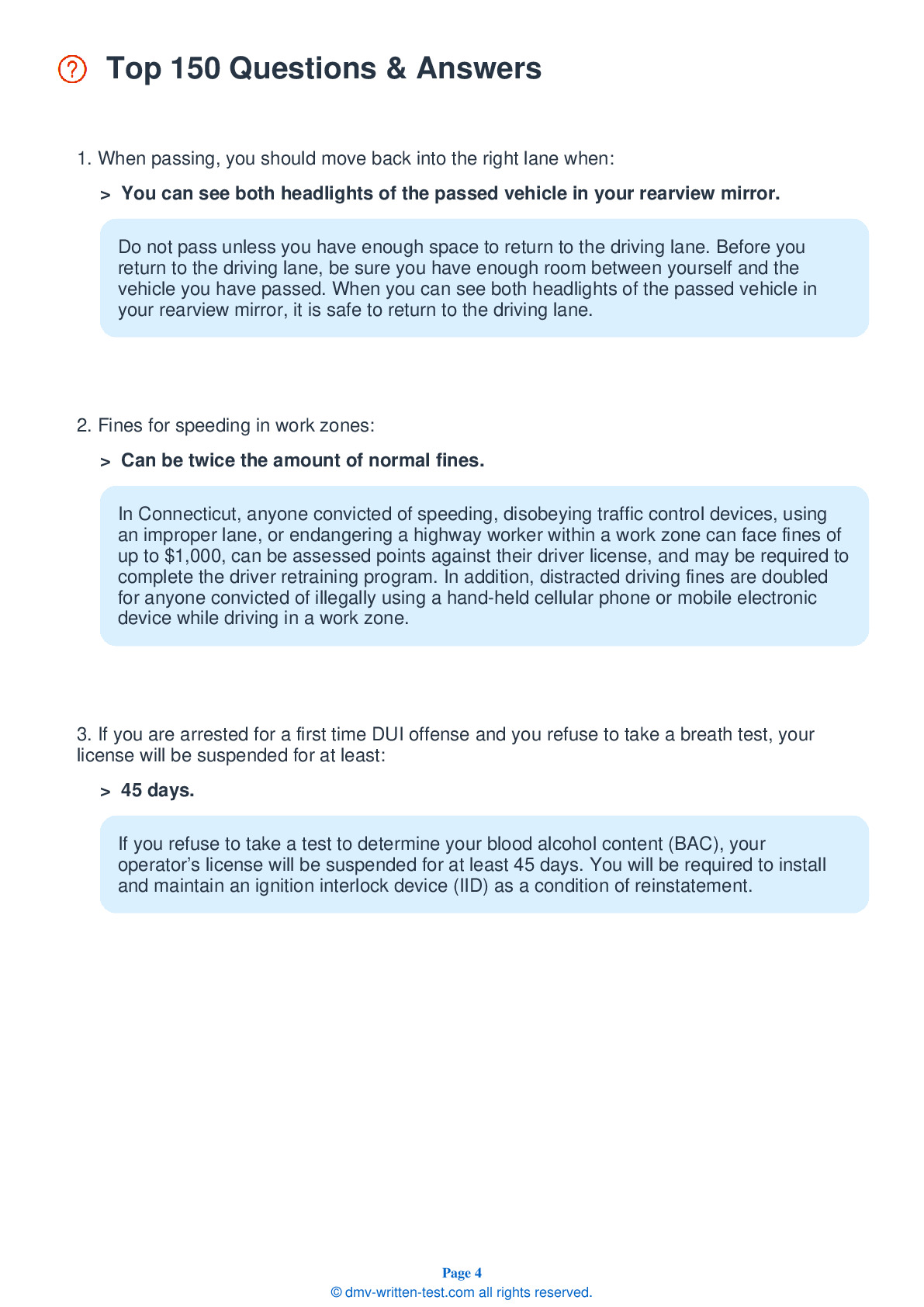2025 Connecticut Permit Test 15
The following questions are from real DMV written tests. These are some of the actual permit questions you will face in Connecticut. Each permit practice test question has three answer choices. Select one answer for each question and select "grade this section." You can find this button at the bottom of the drivers license quiz. For a complete list of questions and answers for Connecticut please visit https://cheat-sheets.dmv-written-test.com/en/connecticut/car.
Number of Tests
Number of Question
Passing Score
9. When being passed by another vehicle:
Explanation
When being passed, you must yield to the passing vehicle and not increase your speed. Allow the vehicle to safely merge back into your lane.
10. When changing lanes, you should never:
Explanation
When changing lanes, you must be sure that there are no vehicles in the space you want to enter. Check for other vehicles behind and to the side of your vehicle by checking your mirrors and blind spots. Always use the proper turn signal before changing lanes to allow surrounding vehicles time to react to your movements.
11. When driving on packed snow, you should reduce your speed by:
Explanation
When driving on packed snow, you should cut your usual speed in half. Use snow tires or chains when the roads are covered in snow.
12. This sign means:

Explanation
A triangular yellow sign with black lettering indicates a no passing zone. It will appear on the left side of a two-way, two-lane roadway at the beginning of an area where prohibitive pavement markings are also used.
13. When a car with bright headlights drives toward you at night, you should:
Explanation
To avoid being blinded when driving at night, do not look directly at the headlights of oncoming cars. Instead, look toward the right edge of the road until the oncoming driver has passed.
14. This sign means:

Explanation
This sign alerts you to the possibility of traffic merging into the main stream of travel. After checking to your side and rear, you should move into another lane, if possible, to allow merging motorists a clear path.
15. When driving at night, you should:
Explanation
Increase your following distance when it is difficult to see due to darkness. Use headlights to increase visibility, following the rules for proper use of high beams and low beams. Avoid looking directly at the headlights of an oncoming vehicle to avoid being blinded by the glare.
16. At an intersection with stop signs on all corners, yield the right-of-way to any driver:
Explanation




